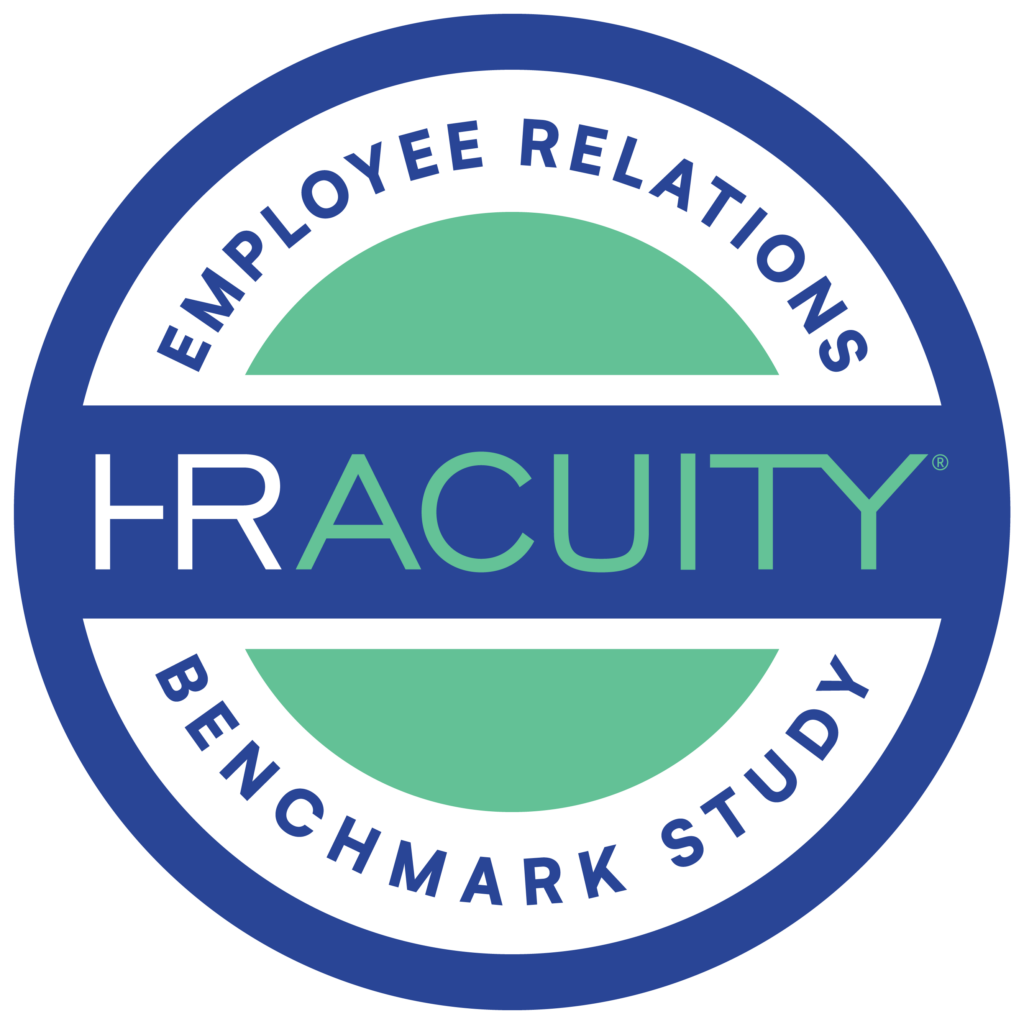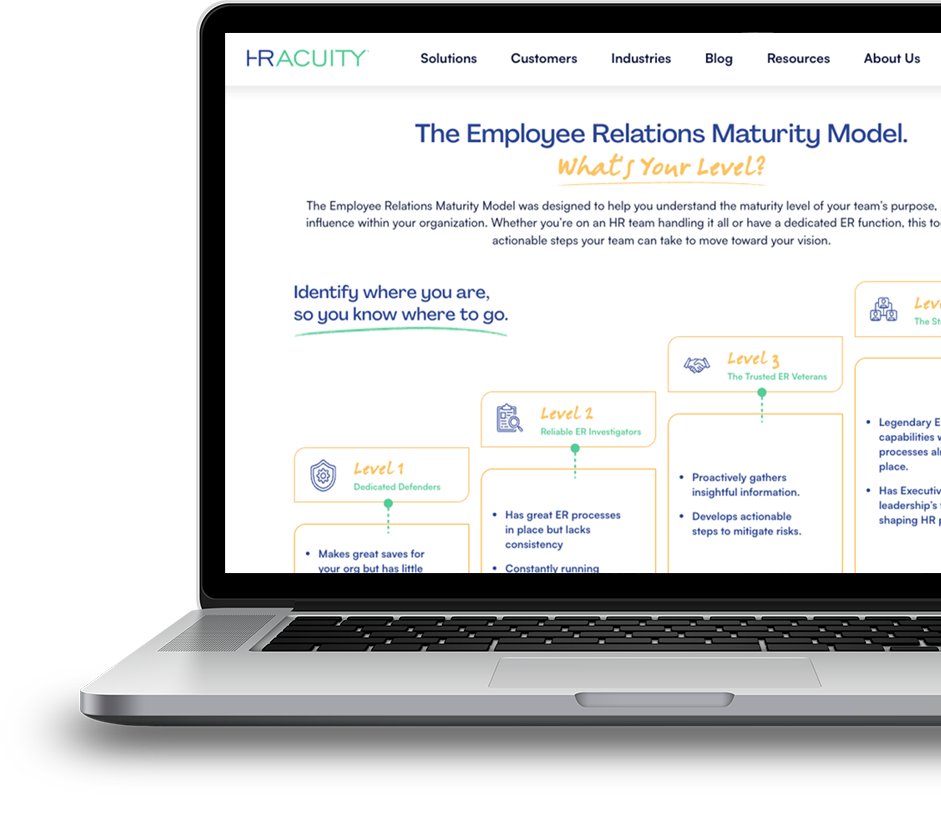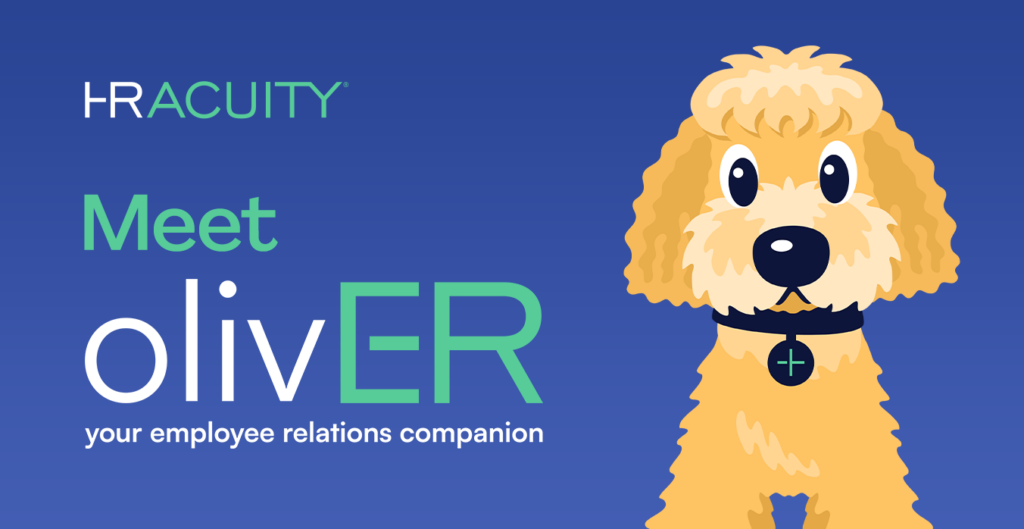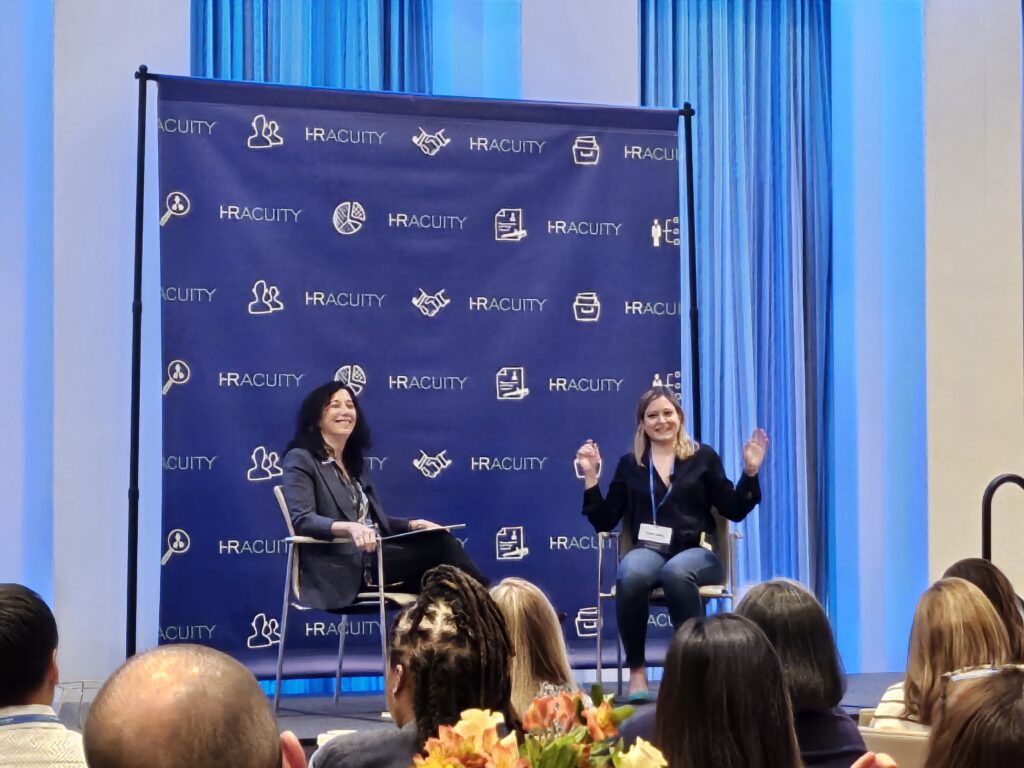Employee engagement is the degree to which employees are committed to their work and feel a sense of belonging within the organization. This is particularly important for employee relations (ER) professionals, because when teams feel valued, supported and challenged in their roles, they’re likely to be committed and positive towards their colleagues and the organization. Engagement is a virtuous cycle and leads to a more harmonious and productive workplace culture.
Unfortunately, we’re operating in a tough talent market. Only 65% of the U.S. workforce is engaged at work, according to Gallup. With such rampant disengagement, companies must take proactive measures to ensure that their people stay committed and engaged.
Low employee engagement is one of the first signs of turnover risk. According to Workday, there can be warning signs of a departing staff member up to nine months before they actually leave – and these signals often reveal themselves in engagement measurements.
An employee engagement strategy that includes employee relations (ER) management techniques, like conflict resolution and communication, can pinpoint the warning signs of impending turnover, recognize building tensions and issues and address them before an employee makes the regrettable decision to update their resume.
Smart companies are taking a hard look at their retention strategies and making the necessary changes to keep their workforce engaged and motivated. From offering competitive compensation packages to providing opportunities for career advancement, there are many ways to show employees that they’re valued and appreciated.
The Benefits of an Employee Engagement and Retention Strategy
Low engagement has obvious consequences. Turnover is expensive and disruptive to business operations. The financial impact of losing a key employee hurts the bottom line, hinders further growth and threatens your organization’s reputation. On the flip side, high employee engagement usually equals high retention rates indicating a successful company that attracts new talent and presents a competitive advantage in the market.
Successful engagement strategies impact the bottom line. In fact, according to Gallup, engaged employees are 43% more likely to remain with a company for a longer period of time. Yet not all engagement strategies are created equal. It’s important to realize that the workforce demands are constantly changing. The systems you had in place even before the pandemic may not be adequate to support the way people work today. Fresh demands, new ways of working and a growing younger, digitally savvy workforce requires that ER adapt the strategies we use to keep our people motivated and satisfied.
Below are some proven strategies that use current trends and focus on the future of the workplace.
ER is an art and a science. This is the science.
Stay ahead of the emerging trends in employee relations.

10 Strategies for Employee Engagement and Retention that Work
1. Connect outside of work
The pandemic further blurred the line between home and work and it’s not going back. It’s time for leaders to reevaluate their approach to employee care and support and make accommodations when necessary. While we used to normalize the separation of work and home life, today it’s become increasingly important for managers to understand and care about what’s happening outside of the workplace. 37% of employees report that their organization understands what they need in their personal lives and for their families, says Harvard Business Review.
2. Give real, visible growth opportunities
Maybe you’ve implemented a continuous performance management system already, but this alone isn’t enough. Yes, regular feedback on strengths and opportunities to grow is an asset, but how are you showing staff members the future of their career journey? Think beyond the tasks they’re assigned and the competencies they need to develop. Add in progress reports, growth options that can be acted on at any time and a clear path to the next level of leadership (if they so choose). Employees are more likely to stick around if they feel that, on their continued journey, they have opportunities to take on a new role and gain new experiences, increasing their earnings potential in a predictable amount of time.
3. Make company culture more than a marketing slogan
So, you’ve “talked the talk” about company culture in your job postings and on your website – so does everyone. Companies with high retention can pinpoint how the team actually lives it. How does it show up when the going gets tough? Do your leaders walk the talk? Do peers hold each other accountable to live the espoused culture, and do they call each other out when the culture is violated, even in small ways? The difference between “yes, we have company culture” and “we have an incredible company culture that includes this and this and this, which has increased our employee satisfaction by this percent” is huge. Make culture norms clear, more than just “happy talk,” and you’ll see a difference in the productivity and purpose of your team without seeing a difference in the names and faces of your team.
4. Implement a talent management system
For those who aren’t sure of the exact definition, a talent management system is a method of finding, developing and retaining top-notch people in the workplace. In today’s job market, a talent management system that actively tracks, collects and analyzes data to drive better engagement should be a priority for every organization. Unfortunately, for some smaller organizations this is a big, complicated task they must tackle without a dedicated talent management function. However, it doesn’t have to be complex. Articulate your philosophy of internal job rotations or mobility clearly, and actively recruit internal talent for deliberate stretch assignments. HR practices such as stay interviews can be one way for HR and ER managers to measure how well talent management and development processes are working, and the extent to which they’re driving retention of your best people.
5. Don’t overlook the disengaged employees
According to Gallup, disengaged workers can account for up to 70% of a company’s crew, which often leads to lost productivity and low morale. To combat this, ER teams should make a concerted effort to identify disengaged staff members and provide them with the necessary support and resources to become more engaged in their work. Just because someone isn’t jumping for joy at work doesn’t mean they don’t want to be. While it might be a long shot to re-engage some, when you actively try to spot the employees that simply need a little extra time and attention to get re-engaged, the amount of effort is usually much smaller than you think!
6. Bring in a coach or consultant when needed
Being so close to your team can make it difficult to see what needs to be addressed or what’s missing.
We know your ER team is capable of handling many parts of the engagement process on its own, but sometimes it’s a little outside help can go a long way. For example, a professional coach can provide an objective perspective on your company’s culture, help identify areas for improvement and aid in developing a realistic plan for addressing them. A consultant may also provide advice on specific engagement initiatives that are working for other clients and offer best practice advice around how your organization can incorporate them.
7. Offer opportunities for social impact
Action speaks louder than words. Show your team you care about more than just their performance at work by offering opportunities for social impact. .Many employees want to work for and stay with companies that are making a positive impact on society. By opening up possibilities for employees to volunteer, donate to charitable causes or participate in sustainability initiatives, you can demonstrate your commitment to corporate social responsibility in a meaningful way. The benefits of having a socially-minded team reach far beyond simply improving employee satisfaction and reducing turnover.
8. Keep managers continually involved
Marcus Buckingham spoke truth when he said “people leave managers, not companies.” It’s necessary that managers, even those who don’t interact with staff on a daily basis, understand their influence on employee engagement. According to SHRM, managers need the proper tools and resources to handle ER issues, but they also need to be held accountable for their decisions. When managers show genuine interest in their staff and offer consistent feedback, they help improve engagement and retention.
9. Respect employee’s time.
Could that meeting have been an email? Everyone values their time, which makes it frustrating when we get pulled away from measurable tasks to participate in unproductive activities. Forbes reports that out of the most significant productivity obstacles, 48% of HR leaders cite meeting length as the highest concern among employees, along with 34% who worry about the lack of agendas in meetings. Keep ER communications efficient and your team will appreciate this respect and ultimately emulate it at work.
10. Collaborate more efficiently
Communication and collaboration techniques have changed, especially for remote workers. With the introduction of platforms such as G-suite and Slack employees often prefer to collaborate anytime, anywhere with other team members or with management. With more methods to connect there’s an increased risk for a disconnect in how people are communicating. Try implementing a system such as an anonymous reporting platform dedicated to making sure everyone feels heard and appreciated.
How Can HR Acuity Help With Employee Engagement and Retention?
Employee engagement and retention are critical components of a successful ER strategy. However, managing these factors can be challenging, particularly for organizations with remote workforces. This is where HR Acuity can help.
HR Acuity is a software platform designed to help professionals manage employee relations and compliance. By leveraging HR Acuity’s tools and resources, companies can improve the employee experience by providing a centralized platform for managing relations, tracking feedback and sentiment and identifying areas for improvement. By taking a data-driven approach to employee engagement and retention, ER teams can better understand the needs and preferences of their workforce and develop targeted strategies for improvement.
According to a recent survey, 55% of employees say that they’re willing to leave their job in the next six months. This statistic underscores the critical importance of establishing a strategy that can actually show improvement in these areas with insight into multiple soft returns on investment (those that can’t be directly measured but are valuable in terms of business performance).
HR Acuity can also help organizations reduce the risk of legal and compliance matters related to employee relations. Create consistent and documented processes for managing employee relations, which can help to mitigate legal and financial risks associated with employee grievances and disputes. By proactively addressing workplace issues, you can create a more positive and transparent culture, which can ultimately lead to higher retention rates and a more engaged workforce.
Ready to try HR Acuity for yourself? Sign up for your demo today.




